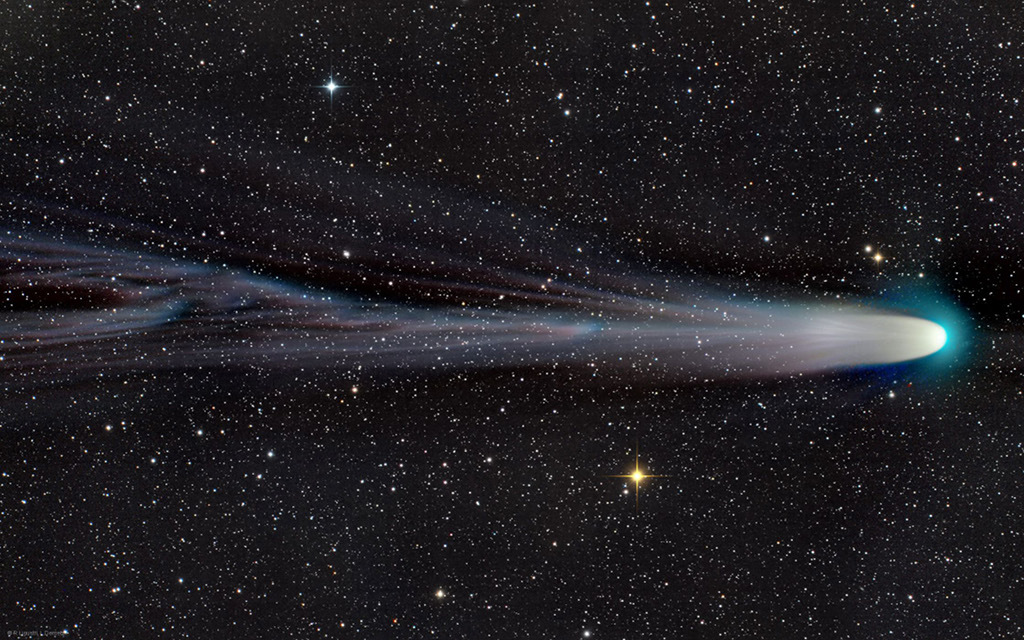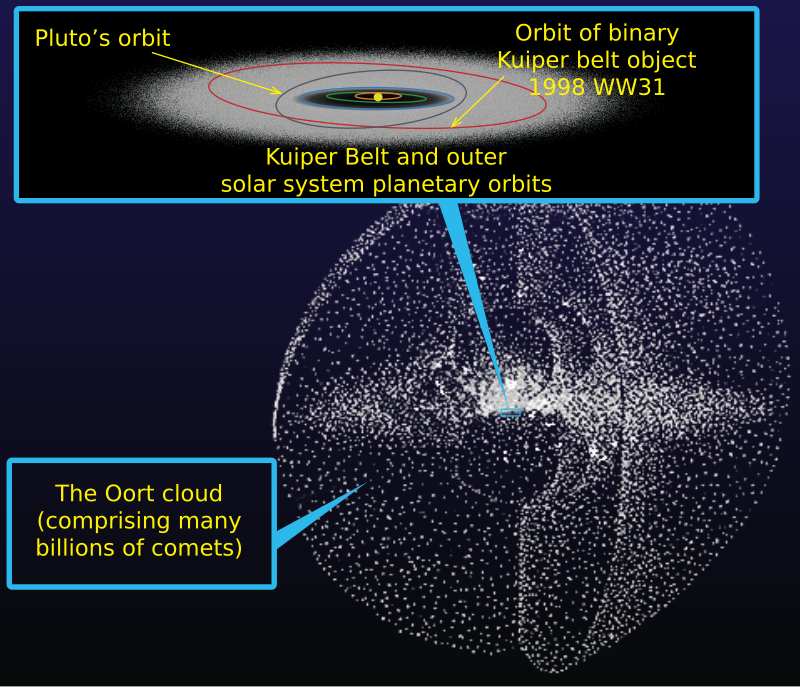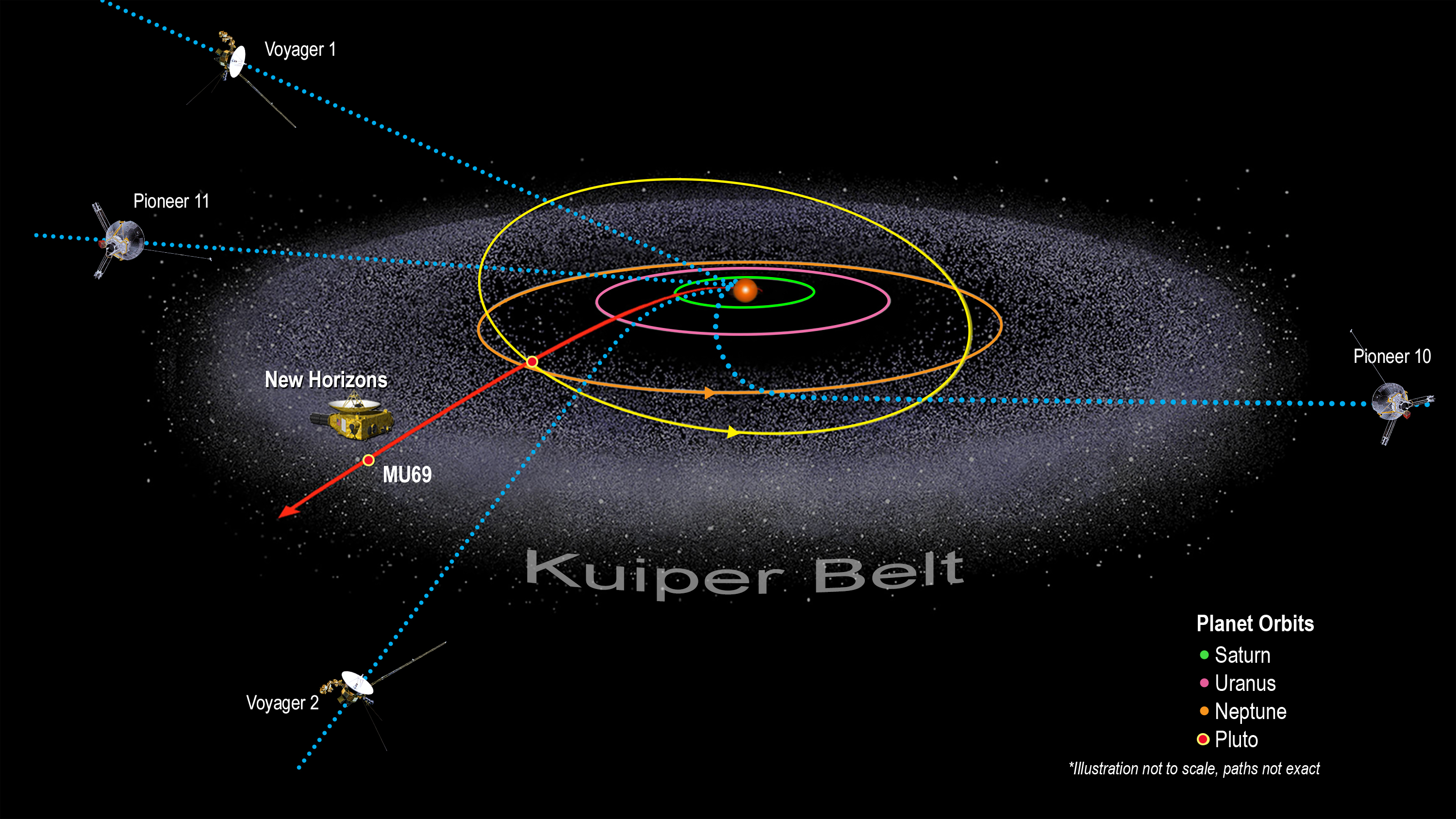Some objects in our solar system don’t orbit the Sun as neatly as planets do. Instead, rocky objects of different sizes and shapes float around our solar system, and sometimes, get really close to Earth and even enter our atmosphere. We give these objects names like shooting stars, asteroids, or comets, but which is which?
Asteroids vs Comets

Asteroids are essentially rocks that orbit the Sun. Most are small, but some can be pretty big — like Vesta, which measures 525 kilometers across, or Ceres the largest asteroid in our solar system, with a whopping 946-kilometer diameter. Overall, though, asteroids are usually quite small, and their combined mass is approximately equal to (or perhaps even smaller than) that of the Earth’s moon.
Most asteroids can be found in or nearby the Main Asteroid Belt — an area between Mars and Jupiter whose gravitational field keeps the dangerous rocks trapped and keeps them from flying about in the solar system (thanks for that, by the way). There are over a million asteroids larger than 1 kilometer (0.6 miles) in diameter, and millions of smaller ones in the asteroid belt. However, it’s hard to study them because they are basically small rocks with nothing to light them up.
Comets, on the other hand, have ice in their interior, and when they get close enough to the Sun, some of that ice starts melting away. The melting helps form the comet’s tail, along with ionized particles from gas molecules that are excited by the solar radiation. The orbits of comets are abnormal, typically very elongated ellipses that make them come really close to the Sun and then go away for a long time. This is what happens to Halley which can be seen every 75 years from Earth.

So the main difference between asteroids and comets is in their composition: asteroids are made of metals and rock, whereas comets also contain ice and dust. This can be traced back to where they formed (asteroids generally formed closer to the Sun, where it was impossible to keep their ice).
Trojans
Trojans are a special group of asteroids that share a planet’s orbit. They are so-called co-orbital objects found near the Lagrange points (points of gravitational equilibrium) of planets or larger moons — the Lagrange points, L4 and L5, to be precise. These regions of equilibrium make it so that a collision with neighboring planets is nearly impossible.
Jupiter has two large groups of trojans, the Trojan Camp and the Greek Camp — yes, astronomers really like wordplay. The system is in a constant astronomical dance: Jupiter’s gravity pulls the trojans towards it, the Sun (which is much larger but also much farther away) also pulls the trojans, and the result is the swarm rotating in the Lagrange point and never leaving the area.

Believe it or not, Earth has its own trojans as well. One was studied by astronomers, although it doesn’t have a charming name. It’s called 2010 TK7 and it was detected by the Wide-field Infrared Survey Explorer (WISE). 2010 TK7 is thought to be 300 meters wide, but thankfully it is in a stable position not threatening us.
Edgeworth-Kuiper Belt and Oort Cloud
Now, let us focus on the comets’ “home”. Comets are found both in the Edgeworth-Kuiper Belt and the Oort cloud. Those are both very distant regions in the Solar System that are far enough from the Sun to allow solid ice to exist.

The doughnut-shaped Edgeworth-Kuiper Belt is located beyond Neptune’s orbit. Scientists believe the region is what was left of material to make a planet, but Neptune was more efficient and got the larger stuff to form itself, so the smaller rocks remained there without being massive enough to coalesce.
Pluto and many comets can be found in the Edgeworth-Kuiper Belt. In fact, being beyond Neptune’s orbit and in resonance with it is one of the reasons why it Pluto has lost its classification of a planet. As a consolation prize, Pluto is the largest object in this region.
Meanwhile, the Oort Cloud is much bigger and even more distant. You can think of it as a sort of shell for the solar system, like how a traditional Chinese paper lantern surrounds a candle. The cloud is technically just a theory because astronomers can’t observe it directly yet, but there is a lot of indirect information that supports its existence. Based on this evidence, the Oort cloud appears to be populated mainly by comets, but there are some asteroids as well. Like the other rocky/icy objects regions, the Oort Cloud is thought to be a remnant of the early Solar System.
The only man-made objects to ever reach distances beyond Neptune are the Voyagers and Pioners spacecraft. Voyager 1 reached over 14,480,000,000 miles from Earth, over 155 times the distance between the Earth and the Sun (called an “astronomical unit”) — and yet this is not even close to the Oort cloud. The 44-year mission would still need to move another 1,845 astronomical units to get there, which will take nearly another 44 years based on its current speed.

Shooting stars
So what about shooting stars? These are small bodies called meteors entering Earth’s atmosphere and heating up to the point they become bright. When some of their minerals survive entering the air, the meteorite is the piece of rock left that reaches the ground.
“Shooting star” is a pretty vague term, and astronomers don’t really like to use it. Instead, they class these objects as either meteors or meteorites. Meteors are rocks that burn up completely before reaching the planet’s surface, whereas a meteorite reaches the surface intact (or at least some part of it does). Meteorites are also smaller than asteroids.
Whenever Earth moves closer to certain asteroids, or when a comet comes near us, the debris can form a meteor shower. When the asteroid or comet passes near us, the debris enters the atmosphere and burns. Most of the debris is as tiny as blueberries, in fact, Earth is bombarded by 5,200 metric tons of micrometeorites (smaller than 1 millimeter) a year, but because they are so small they aren’t a threat.
Since we are orbiting the Sun, we get close to the same location every year, so we have periodic meteor showers like Orionids, Geminids, and many others named after the constellation they will appear at. It is easier to see the showers under a dark sky, without city lights to interfere. Also, depending on whether the phenomenon will happen near the horizon or not, you may find trouble with buildings blocking your view.

In the end, the differences between the rocks aren’t so difficult, right? The comet is icy different from the asteroids. Comets are periodic and can be seen every 80 years or so. Many asteroids are near Jupiter who keeps most of them there – phew. Meteors are small objects that enter the atmosphere and if some of them survive, the remains are meteorites.


